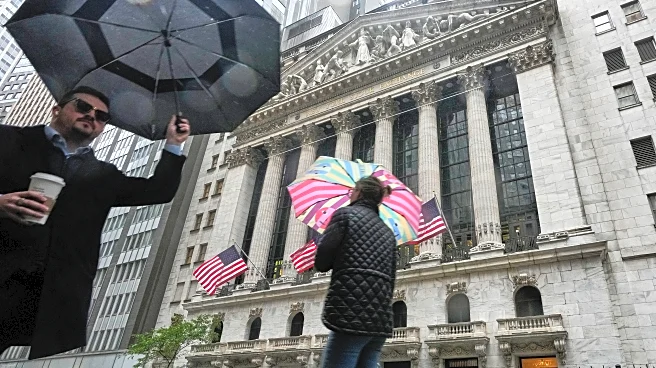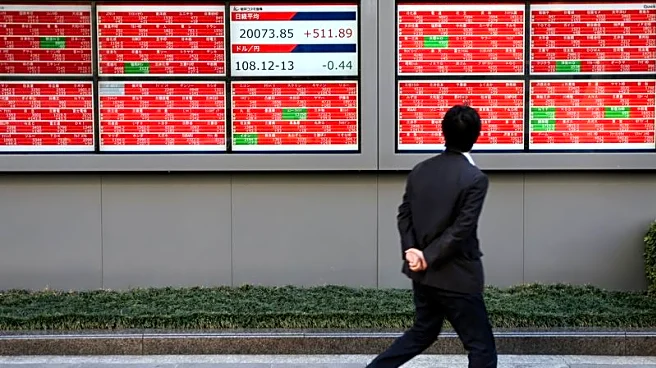What's Happening?
Gold prices have experienced significant fluctuations recently, reflecting broader economic uncertainties and a low-trust environment. Historically, gold has been considered a 'low-trust asset,' serving
as a stable medium of exchange during times of economic instability. This year, gold prices surged, driven by factors such as central bank demand and a weakening U.S. dollar. However, recent market corrections have seen gold prices fall from their highs, with a notable dip of nearly 8% from peak levels. This volatility has impacted gold mining companies, with stocks like Anglogold Ashanti and Newmont experiencing declines. Despite these setbacks, the fundamentals for gold remain strong, with expectations of continued demand and profitability for mining companies.
Why It's Important?
The fluctuations in gold prices highlight the ongoing economic uncertainties and the role of gold as a hedge against currency devaluation and geopolitical instability. For investors, gold remains an attractive asset due to its historical stability and potential for long-term gains. The recent price corrections offer opportunities for strategic investments in gold and related stocks. Mining companies, while facing short-term challenges, are poised to benefit from sustained demand and favorable cost conditions, such as low oil and gas prices. The situation underscores the importance of gold in diversified investment portfolios, particularly in times of economic distrust.
What's Next?
As gold prices stabilize, investors and mining companies will closely monitor economic indicators and central bank policies that could influence future demand. The potential for further price increases remains, contingent on global economic conditions and currency fluctuations. Mining companies are expected to continue capitalizing on current market conditions, with earnings reports providing insights into their financial health and operational strategies. Investors may look for buying opportunities during market dips, anticipating long-term gains as economic uncertainties persist.
Beyond the Headlines
The current economic climate, characterized by distrust in traditional financial systems, has reinforced gold's status as a safe-haven asset. This trend reflects broader societal issues, including political polarization and economic inequality, which contribute to the demand for stable investment options. The role of gold in this context highlights the intersection of economic and social dynamics, with implications for future investment strategies and market behavior.













